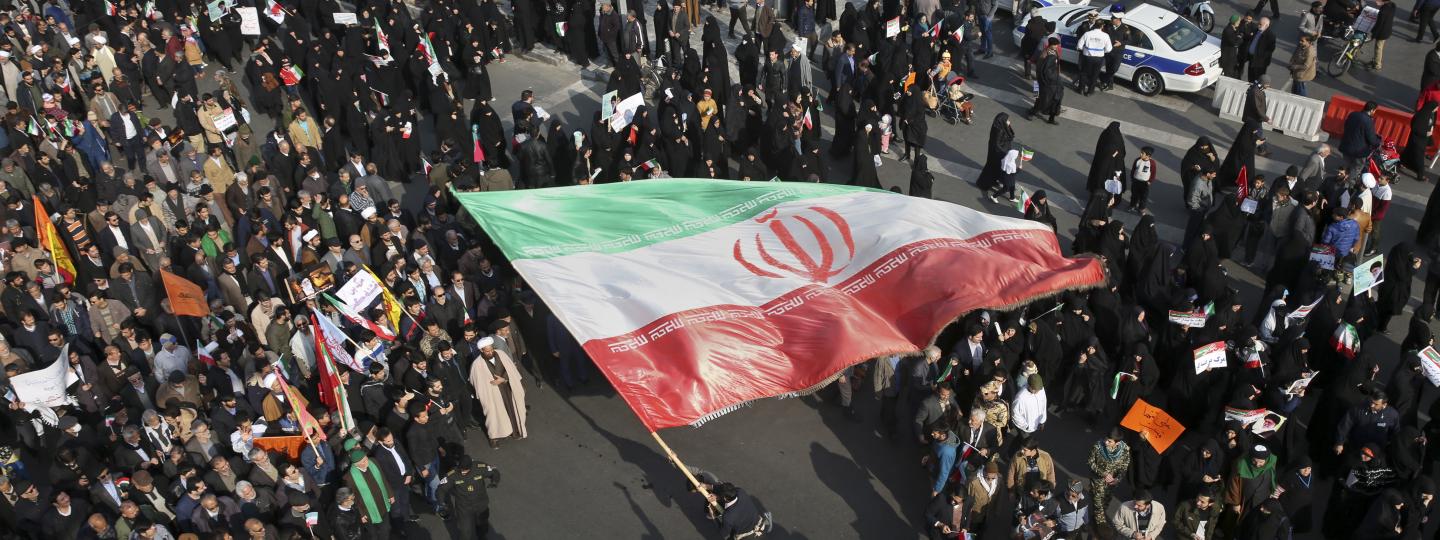What began as a protest over food prices has grown into a full-fledged political crisis in Iran, complete with its own outpouring of misinformation.
Since Dec. 28, when demonstrations broke out in the northeastern city of Mashhad, tens of thousands of Iranians have protested across the country. The protests span more than two dozen towns and have left at least 21 people dead and hundreds arrested.
But if you’re in Iran, you wouldn’t be reading that in the local newspapers.
“There is no official reporting coming out of Iran of the protests,” said Farhad Souzanchi, a research manager at ASL19, a Toronto-based technology group aimed at improving Iranians’ access to information online. “There are no professional journalists on the ground — they’re not allowed to work, they’re not allowed to cover it.”
Jameefarda, an Iranian newspaper that started covering the protests on day one, was shut down on Tuesday, Souzanchi said. The country has no freedom of the press, according to Freedom House’s 2017 report, and it regularly censors and imprisons journalists who cross long-standing coverage redlines.
Because of that, Souzanchi said most people are getting news about this week’s protests from social media — and that’s problematic.
“The only thing coming out is the user-generated content,” he said. “The biggest problem was that, as it happens in most situations like this, videos are being published with a context that is not true.”
Until the government shut it down alongside Instagram earlier this week, Telegram — a messaging app that has about 40 million monthly users in a country of 45 million internet users, according to Politico Magazine — served as a hub for both protest organizers and misrepresented videos of demonstrations and encounters with officials, he said. While ASL19 hasn’t come across any huge hoaxes yet, presumably because of the social media blackout and slow internet speeds, some videos did take off this week.
“There were admins and groups that were constantly publishing these videos,” he said. “Most of the videos have been debunked by the users themselves, of those cities.”
That’s because it’s hard for fact-checkers to debunk viral rumors in Iran. There’s no access to Google Street View in most of the country, which Souzanchi said makes it nearly impossible to check from afar whether protest videos actually are where they claim to be. And when the government blocks social media sites in the country, it’s harder for fact-checkers to uncover what’s actually going on — even if they’re abroad.
“The hard part about verifying these videos in this case is that these protests are happening in very small cities, unlike the 2009 protests, which were mostly in Tehran,” said Souzanchi, who also helps run ASL19’s fact-checking projects Rouhani Meter and Fact-Nameh. “They’re all dark because they’re happening in nighttime. Only the locals can verify it, and they have been verifying some of it, on social media.”
Poynter reached out to Vahid Online, an Iranian blogger and internet activist who Souzanchi said has been leading the charge to debunk misleading Telegram posts, but had not heard back as of publication. Poynter also reached out to Thomas Erdbrink, The New York Times Tehran bureau chief, and Ershad Alijani, an Iranian journalist with France 24 Observers.
One of the most popular pieces of misleading media Souzanchi identified is a video purporting to depict a 300,000-strong protest in Iran. There’s just one problem: It doesn’t.
The video — which was posted by multiple tweeters this week, amassing thousands of likes and even coverage in the U.S. — actually shows a large anti-regime march from 2011 in Bahrain. The red flags and Arabic slogans, as well as the fact that the majority of Iranian economic protests have taken place in small towns at night, make it an obvious instance of misinformation.
Whoa! 300,000 March for democracy in Iran! Incredible! #IranProtest #SundayMorning #HappyNewYear pic.twitter.com/BQZuXDbh11
— Kambree Kawahine Koa (@KamVTV) December 31, 2017
Another popular video Souzanchi said has been circulating on social media claims to show Iranian security forces looting a shop. In fact, it depicts Mexican riot police allegedly stealing from a Mexico City store.
غارت مال مردم اینه پلیس ضد شورشی ک بعضیا ازش حرف میزنن اخوند جماعت دزده زیر دستا و نوکرا و سگاشونم دزدن من ایرانیم ولی این جماعت فک نکنم ایرانی باشن #تظاهرات #تظاهرات_سراسرى #ایران #اعتراض_سراسری pic.twitter.com/3lRVqLph2e
— King Vtoo (@KingVtoo) January 3, 2018
The post got less engagement than the misrepresented protest video, but Souzanchi said it illustrates the guerrilla nature of how rumors and videos about Iran spread on Twitter, Telegram and elsewhere (For more hoaxes and inaccuracies about the Iran protests, check out this roundup).
While verifying information from the ground in Iran is still difficult for ASL19, Souzanchi said that, over the next few days, his team is working on developing FAQs for economic questions Iranians may have regarding the protests. They’re also developing educational content in Farsi for distinguishing between real and fake images.
That way, at least Iranians are armed with some information while they struggle to circumvent the country’s block on social media.
“It’s a new territory for us, so we’re trying to kind of see what we can do,” Souzanchi said. “It would have been easy if it was in a European country or even (elsewhere) in the Middle East … We’re giving the people the resources to verify these videos.”







